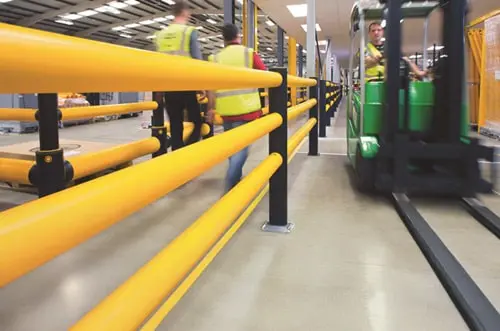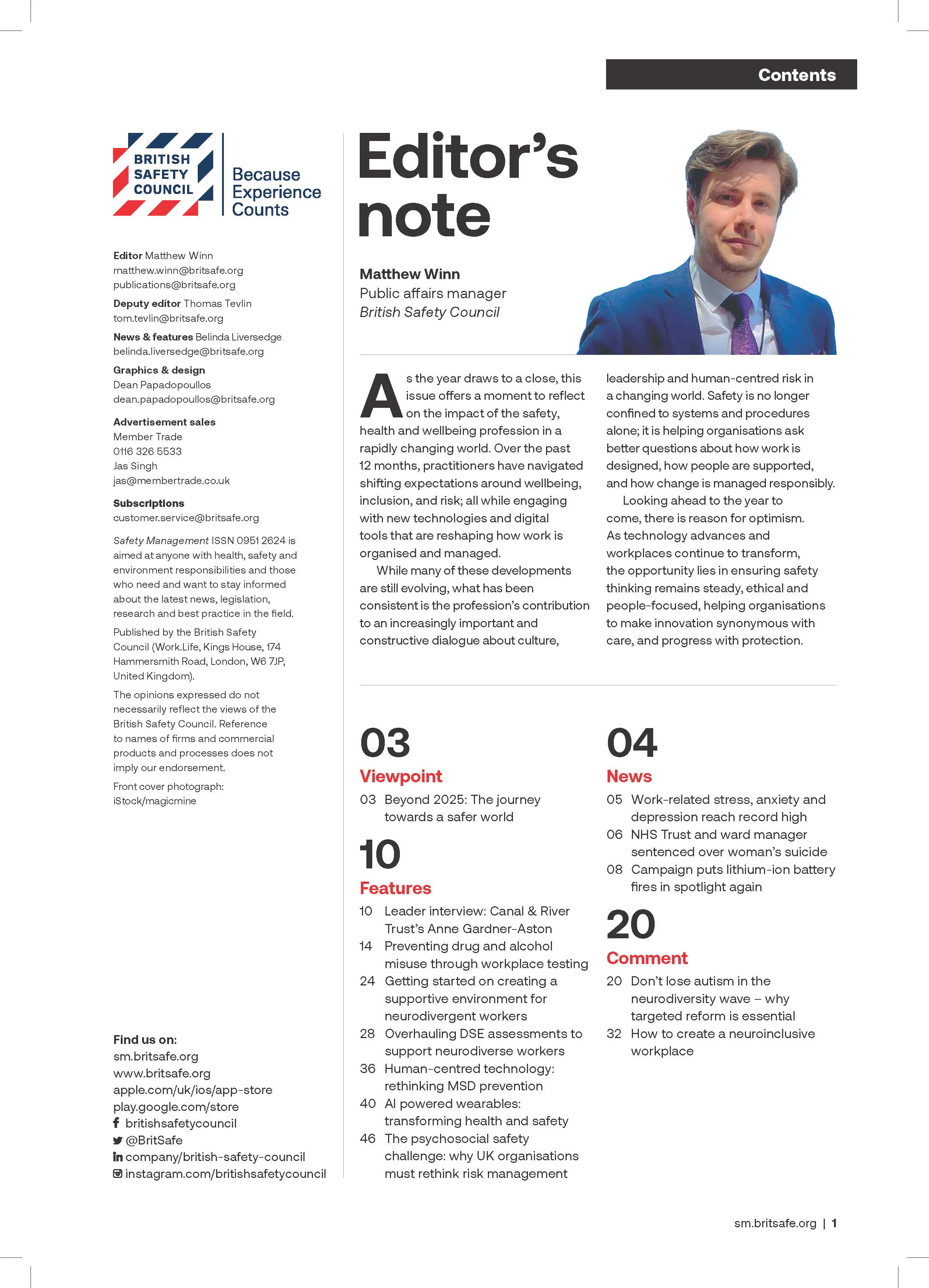The British Woodworking Federation’s annual Fire Door Safety Week this September will encourage duty holders such as those in charge of residential buildings to consider the dangers from lithium-ion batteries and ensure fire doors remain fit for purpose in reducing the risk should a battery-related fire break out.
Features
Tackling new fire risks as Fire Door Safety Week celebrates 12th year
Over the last decade, the potential fire risks in our homes, workplaces and public buildings have evolved alongside technology. With a rise in lithium-ion battery products – from smartphones to e-bikes – and the fire risk they pose, we cannot allow fire safety to slip down the agenda.
As Fire Door Safety Week (22–26 September 2025) enters its 12th year, its core objective remains as crucial today as it did when the campaign was created: to raise awareness of the critical role of fire doors in holding back the spread of fire and smoke to save lives. Protecting escape routes and allowing emergency services to enter the building, a fire door’s performance can mean the difference between life and death, but unfortunately, they continue to suffer from damage and poor maintenance putting lives and buildings at risk.
 A fire door’s performance can mean the difference between life and death. Photograph: iStock
A fire door’s performance can mean the difference between life and death. Photograph: iStock
In the wake of the Grenfell Tower tragedy the Government has introduced new legislation and standards to drive forward best practice and enhance accountability for fire safety across the built environment.
Here, I share an update on the latest developments in the sector, and how this year’s Fire Door Safety Week campaign is set to shine a light on the latest fire risks that hide in plain sight.
Transition to new fire door test standard
The upcoming transition to the European classification for fire resistance testing of fire doors (EN 13501-2) in 2029 is in direct response to recommendations from the Hackitt Review and the Grenfell Tower Inquiry.
While the change from the current British Standard (BS 476-22) is several years away, the initial announcement has resulted in questions from those responsible for the purchasing, installation and ongoing maintenance of fire doors. This has understandably been focused on the performance of fire doors, and whether doors tested to the British Standard remain compliant.
The answer is yes; fire doors tested to BS 4765-22 are compliant and will remain so after the 2029 transition – if they are correctly installed and maintained to ensure they remain fit for purpose.
Timber fire doors tested to the British Standard have actually been proven by Government testing to demonstrate fire resistance times exceeding the 30-minute requirement. In fact, the average test time for fire doors supplied by BWF (British Woodworking Federation) members was 46 minutes, clearly demonstrating the performance and reliability of timber fire doors.

At the BWF, we’re working alongside industry partners, regulators and testing bodies to support our members and the wider construction industry throughout this transition period. By providing guidance and insight-led content we will help provide clarity to all those involved in the manufacture, installation and maintenance of fire doors.
For now, those responsible for fire doors in buildings do not need to take any action as there is no need to replace fire doors that meet existing standards. It is however advisable to begin engaging with the broader supply chain to plan for any fire door replacements that may be scheduled for 2029/30.
Fire Door Safety Week – tackling new fire risks
To raise awareness of the role that fire doors play in the event of a fire, the British Woodworking Federation launched Fire Door Safety Week. An annual week-long campaign in September, it aims to provide knowledge, insight and guidance for those responsible for fire doors and members of the public, to give them the confidence to spot issues with fire doors and, importantly, report them.
Over the last decade the campaign has addressed important topics such as whether residents would stay put in the event of a fire, the locations people are most fire safe and the concerning under-reporting of fire door related issues.
This year, the campaign will confront emerging fire risks, particularly from lithium-ion batteries, which are now commonplace in homes and workplaces. From laptops and e-bikes to vapes and power tools, the risk is increasingly visible – and yet often overlooked.
In fact, Scotland’s Fire and Rescue Service in 2024 reported a 766 per cent increase in battery-related fires since 2018. The resulting average insurance claim involving lithium-ion batteries exceeds £50,000, with many fires initiated by human behaviours such as overcharging, using damaged batteries or unregulated chargers.
Raising awareness of the fire risks these batteries pose, the 2025 campaign will share new research to help uncover the number of devices in properties across the UK, charging habits and how property owners and managers are responding.
We’ll also be sharing insight to help property owners, managers and residents mitigate fire risk by ensuring their fire doors remain fit for purpose and that any issues are reported and quickly addressed.
A collaborative approach to fire safety
Fire safety is everyone’s responsibility – whether it’s raising awareness, tackling misinformation or proactively reporting issues with fire safety systems like fire doors.
This year Fire Door Safety Week will address the latest fire risks across the UK, but our core messaging remains – fire doors can only perform their life-saving role if they are correctly installed and maintained.
Everyone – from residents to responsible persons – can help ensure the buildings we live and work in are fire safe.
The Five Step Check to quickly identify any issues with your fire door:
- Certification – is there a label or plug on the top or side of the door leaf to evidence it’s a third-party certified fire door? Or does the doorset have a conformity marking label applied? If not, report it to the person responsible. All ironmongery such as locks, latches, controlled door closers and hinges must be conformity marked, when required, and compatible with the door leaf’s certification.
- Apertures – check the door for alterations for glazing apertures or air transfer grilles as this will make certification void.
- Gaps and seals – check that the gap around the door frame is consistent – this is often between 2mm and 4mm, while the gap under the door can be up to 8mm. If the gaps are larger or you can see light under the door, report it. Look for signs of damage to the intumescent seals around the door or frame. These seals are vital to stopping fire and/or smoke moving through the cracks – if you see any gaps or damage it needs to be reported.
- Closers – confirm the closer shuts the door onto the latch from any position.
- Operation – check the door closes around all parts of the frame without sticking on the floor or frame.
For more on Fire Door Safety Week, visit:
firedoorsafetyweek.co.uk
Helen Hewitt is CEO at the British Woodworking Federation
FEATURES

Underpinning safety training with neuroscience for long lasting impact
By SSE Active Training Team (ATT) on 30 November 2025
A behavioural safety training programme developed by Active Training Team for energy provider SSE has been carefully designed with neuroscientific principles in mind – resulting in a prestigious industry award for Best Training Initiative in 2024.

Why a painted line will never be enough
By UK Material Handling Association (UKMHA) on 20 November 2025
Businesses that operate material handling equipment like forklifts are being urged to submit accident and near miss details to a new confidential reporting portal so the industry can identify what needs to be done to improve safety standards.

Why workplace transport training is changing in 2026 and what it means for employers
By AITT on 26 November 2025
New workplace transport training categories due in January mean it is essential to ensure operators of material handling equipment have the necessary training for the exact type of machine they use, and accredited training providers are an ideal source of advice and conversion training.



